Windows are the most important part of a room, both functionally and design-wise. A window should be able to provide maximum natural light and ventilation to the room. Curtains and blinds allow us to adjust light and air, as we require. They also allow us to frame and emphasize the windows against the décor and color of the room.
Roman blinds or Roman shades have been used for this exact purpose, for centuries. The variety of styles, colors, and fabrics that can be applied to them, make them very versatile. Roman blinds can grace any room with old or modern décor, and they still would not look out of place. They are also very easy to operate and convenient to clean.
Therefore, using Roman shades for your windows is a very smart choice. However, you will need to consider some tips when you try to choose colors and fabrics for your blinds. Check them out here!
How to Use Roman Blinds
-
Which rooms can you use them for?
Let us start with the rooms first. Which rooms can you use Roman blinds for? As mentioned above, the versatility of Roman blinds allows us to use them in absolutely any room. You can use different fabrics for different rooms, depending on the amount of sunlight coming in from the windows. They can frame your windows better than most roller, vertical, or Venetian curtains.
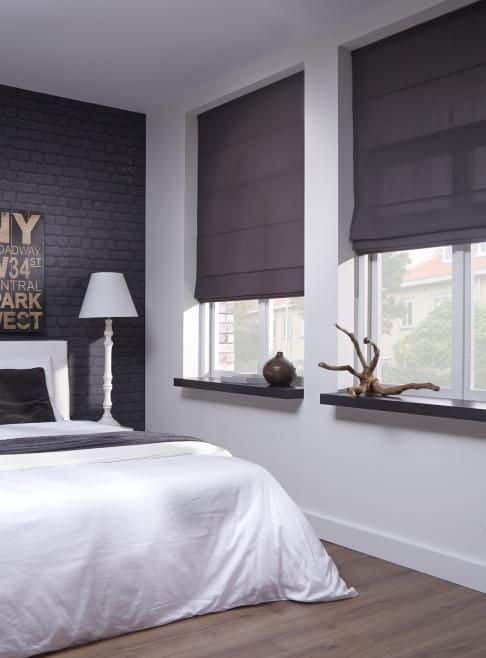
Roman shades provide proper insulation and look homely when used in residential rooms like living rooms, bedrooms, studies, and so on. They provide a clean finish and a professional décor to offices and conference rooms. Although Roman blinds are ancient furnishings, they are timeless in their use and would look amazing in any room.
-
Can they be used in bathrooms and kitchens?
Roman blinds using traditional fabrics cannot be used in damp places like kitchens and bathrooms. It is important to carefully select fabrics that will not accumulate dust and mold due to humidity. Kitchen blinds tend to soak up oils and grease, eventually causing dust on them. Thus, it is essential to manually clean the grime and grease away regularly so that your blinds look clean and tidy.
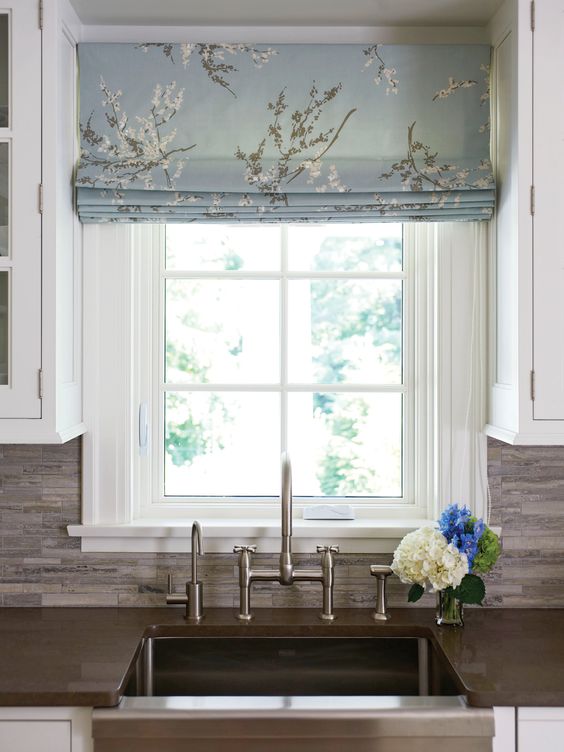
Luxury fabrics such as taffeta, velvet, and faux silks show moisture damage prominently. It is recommended that you use polyester and cotton blends or 100% cotton fabrics for humid rooms, as they are easy to clean and can be washed frequently. Another way of making the damage look less obvious is to use patterns and bold designs for the blinds.
-
How can you choose fabrics and linings?
In any case of window drapery, it is important to address the fact that direct sunlight can cause fading of the colors of the fabric and lining. Therefore, even if they look colorful from the inside of the rooms, they can look dull and patchy from the outside. To avoid unwanted malfunction of furnishings, it is necessary to choose the best kind of fabrics and linings.
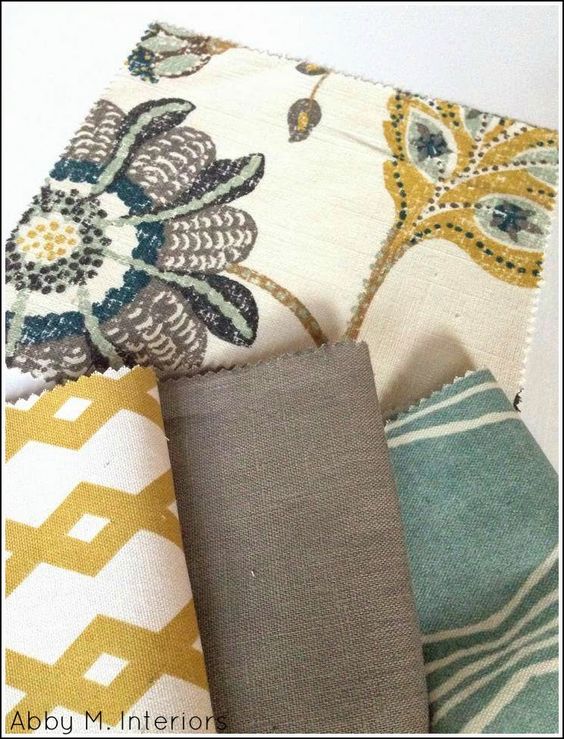
Light-weight fabrics like faux silk and taffeta, and medium-weight fabrics like cottons, linen, and their blended varieties, can give crisp and sharp folds to your drapes. Heavier fabrics like velvet, chenille, and pure wool can provide professional pleats and neat folds. Heavy fabrics also insulate ill-fitting windows due to their thickness.
The linings support the structure and shape of the blinds and hide the dowels and tape channels properly. It also acts as an extra filter between sunlight and face fabric, preventing it from fading. Colored lining cannot be used as the fading causes it to look striped. Blackout linings have been the most preferred option as they reduce the rate of fabric fading and add insulation.
-
Which styles can you choose for your blinds?
Roman blinds give you a variety of options to make your blinds look unique and stylish. There are a lot of styles available that give your shades different kinds of folds and draping patterns. The available styles for your Roman blinds are: Flat, Classic, Relaxed (European), and Hobbled. Using one of these four styles for your rooms and offices can change the feel of the décor.
Flat Roman blinds use a single piece of continuous fabric, without any dowels. Classic and hobbled Roman styles use the dowels for a neatly folded and pleated look. They look almost effortless and have a stiff professional finish. Relaxed or European Roman shades use the natural flow of the fabric to add softness to an otherwise stiff-looking flat Roman style.
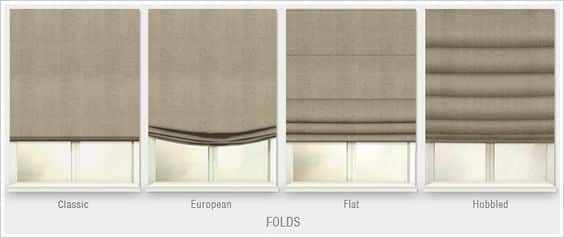
Now that we have decided on the rooms, fabrics, and styles for your Roman blinds, it is essential to choose colors and patterns to match your décor. There are simple tricks to choose colors and patterns that match your room and to make sure they are not sore to the eyes. Let’s see how these tricks work:
-
Contrasting colors of the blinds
Contrasting color tones with your décor is the easiest trick in the book. Instead of using just a single fabric or color, you can go for a brilliant range of fabrics and colors to match your room. Light and medium-weight fabrics can be used for the predominant color of the blind, bordered by velvet, woolen, or satin ribbons of contrasting colors.
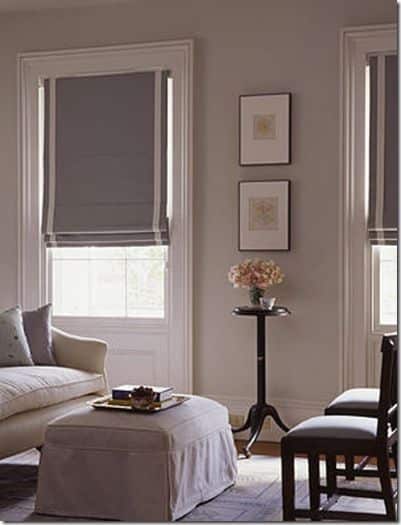
-
Add pattern to monochrome rooms
Bathrooms usually have a single color for their tiles and ceramics. It can look quite mundane and unsettling if there is no change of pattern or a splash of color. Choosing large patterns and curvilinear freehand designs for your blinds can present a much-needed break from geometric monotone.
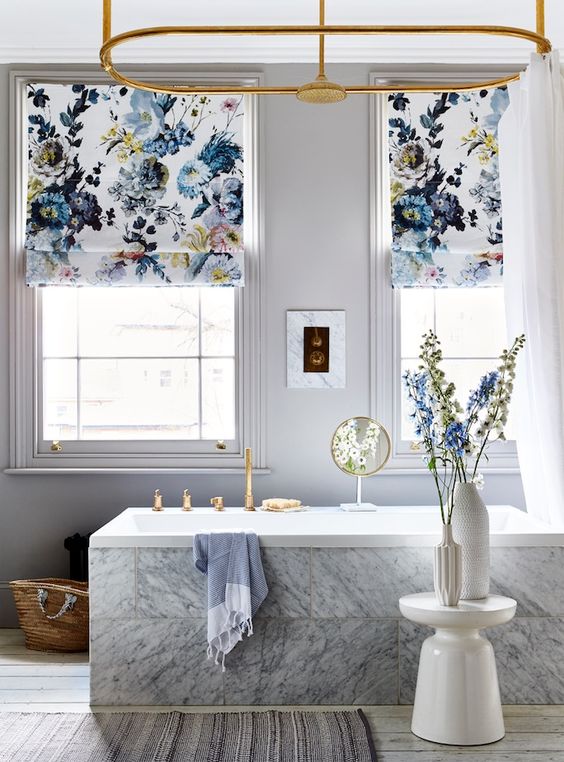
A similar trick can be applied to rooms with simple pastel colors, like baby rooms. The large patterns can make the room look comforting and add a little muted darkness to the room. You can fit the Roman blind to the edges of the window, letting minimum light seep in.
-
Experimenting with patterns and prints
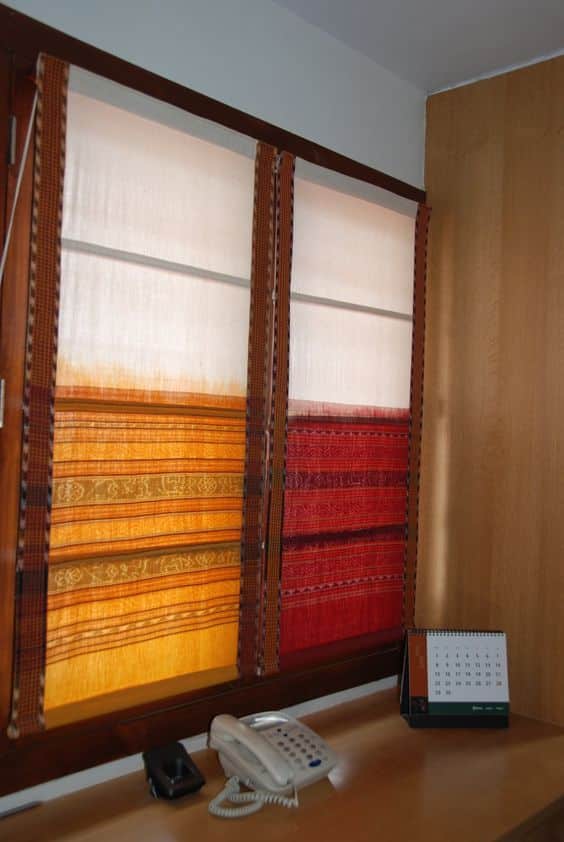 Roman blinds offer a lot of scope to experiment with vibrant designs or fine prints. Large symmetrical designs of bright colors can look inspirational in a room of muted hues. It cannot exactly be called contrasting, but it balances out the simplicity with boldness. For instance, these blinds made from Indian sarees, add a bright pop of color in a room of muted earthen hues, while still looking sophisticated and organic.
Roman blinds offer a lot of scope to experiment with vibrant designs or fine prints. Large symmetrical designs of bright colors can look inspirational in a room of muted hues. It cannot exactly be called contrasting, but it balances out the simplicity with boldness. For instance, these blinds made from Indian sarees, add a bright pop of color in a room of muted earthen hues, while still looking sophisticated and organic.
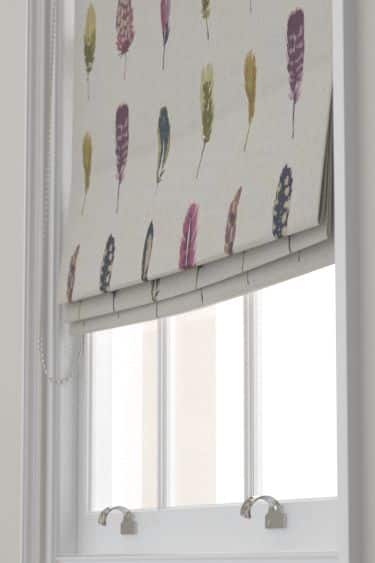
Another way to add substance to your décor is to introduce fine-printed cotton for your Roman blinds. Small, evenly-spaced geometric or organic designs can make your room look sophisticated and fluid. Embroidered Roman drapes have also caught people’s intrigue. Instead of having printed designs on your blinds, hand embroidery can give them a personal touch. Attaching laces on the lower ends of the blinds gives them a cozy look.
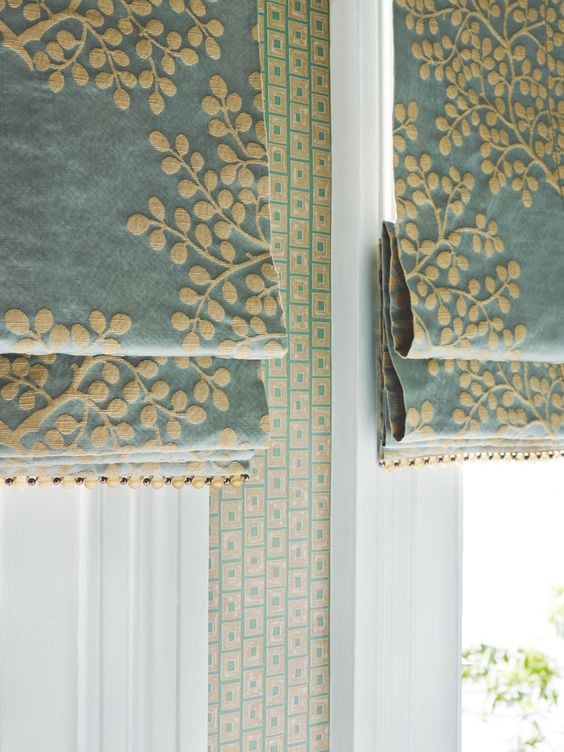
-
Eliminating the lining
How is eliminating the lining of a Roman blind possible? Wouldn’t it damage the blinds and fade the color? As mentioned above, linings provide extra protection to the fabric and its dye from harsh sunlight, which causes the fabric to deteriorate and fade. However, it is okay to break the rules sometimes.
If you have a room not directly facing the sunlight, you can maximize the effect of natural light by using unlined Roman shades. If the blinds have fine prints on them, the natural light can filter in, accentuating them and increasing the visibility in the room. Since the blinds aren’t directly in front of sunlight, the fabric will remain durable for longer.
-
Double drapery
Coupling Roman blinds with sliding curtains is an upcoming trend. This trend comes with added advantages related to décor and efficiency. If you have South to East facing windows in your room, you can block out excess light by adding another layer of fabric to it.
Matching the Roman drapes with sliding curtains will surely reduce the light bleed. The double drapery layer can insulate the room from excessive cold and gusts of strong wind. If you have plain Roman blinds, you can couple it with finely printed curtains with contrasting colors. It can prove to be an exceptional idea, especially if executed in kids’ rooms.
-
Accentuate the size of the room
Using striped blinds can make your room look longer or higher than it actually is. If you have a high-ceiling living room, using Roman blinds with horizontal stripes can highlight the height of the ceiling. The proportions of your room can be flattered by adding lines and stripes to the design of your Roman shades. These bright orange shades make the room look more spacious and feel warmer.
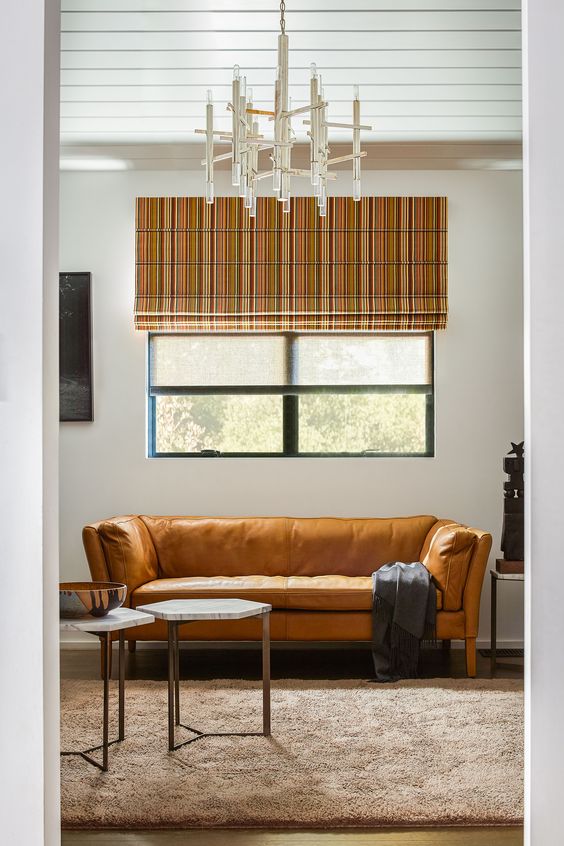
-
Boxing around the windows
For a clean finish in your contemporary room, you can consider boxing a frame around the edges of the window. This would make your Roman blinds look sleek and crisp, and avoid any light bleed. You can also give a thought to installing a box pelmet above your window. This lets the upholstered blinds be completely raised, allowing maximum natural light to filter in. The box pelmet also keeps the folded blinds safe from dust.
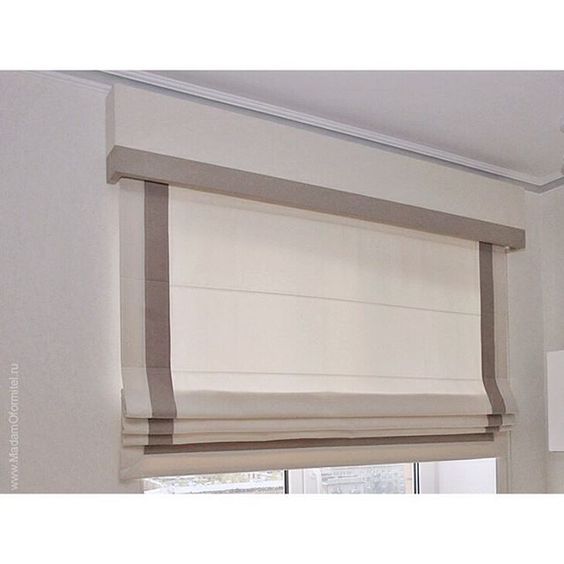
You can take inspiration from these tips and tricks to design Roman blinds for your home and office. I’m certain you might be getting newer ideas to decorate your windows with these sophisticated Roman shades. Share them here and let us know too!
Related Articles
20 Cool Hanging Bed Ideas for a Soothing Sleep
10 Affordable Blinds to Transform Your Room Instantly
11 Tips and Tricks on How to Use Roman Blinds in Your Interior Design
15 Types of Windows Shades for Your Future Home
6 Best Blackout Curtains For Blocking Lights
All images are the property of their respective owners.
Images discovered via Pinterest.com


